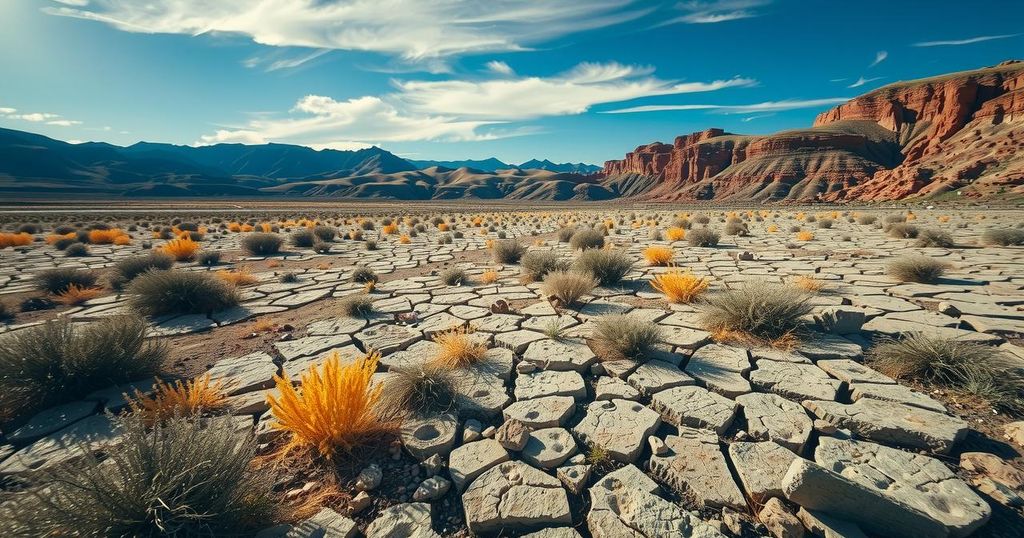Researchers warn that Colorado may experience extreme droughts every six years due to climate change and rising temperatures. The heightened severity of drought conditions was showcased during the 2020-2022 drought, where higher temperatures played a significant role. Experts stress the necessity for immediate reductions in greenhouse gas emissions to avert severe consequences for water resources and communities.
A recent study has revealed that Colorado and the broader western United States may face extreme drought conditions occurring once every six years by the end of this century, a direct consequence of climate change and rising global temperatures. Researchers attribute this alarming shift to the increased severity and frequency of droughts, suggesting that immediate actions are necessary to mitigate greenhouse gas emissions.
Historically, Colorado experienced severe droughts, like the one from 2020 to 2022, roughly once every millennium. However, the recent increases in temperature have considerably intensified these events, altering this long-standing pattern. Joel Lisonbee, a scientist from the University of Colorado Boulder, emphasized that future droughts are predicted to be longer, more widespread, and even harsher than those witnessed in the past.
The drought from 2020 to 2022 exemplified the dire impacts of climate change on the region, during which higher temperatures accounted for approximately 61% of the drought’s severity, with reduced precipitation being responsible for the remaining 39%. Such dry conditions have led to Colorado experiencing its three largest wildfires on record, devastating over 541,000 acres of land, resulting in mudslides that obstructed Interstate 70 and caused perilous flash floods.
Moreover, the Marshall Fire in Boulder County, which occurred in December 2021 and stands as the most destructive wildfire in Colorado’s history, underscores the year-round wildfire risks. Additionally, smoke from these fires has significantly deteriorated air quality, with some days being among the worst globally, particularly for the Front Range region.
The scientific consensus indicates that rising atmospheric temperatures allow for increased evaporation and decreased precipitation, exacerbating the drought conditions in a harmful feedback loop. “The only way to prevent this is to stop temperature increases, which means reducing greenhouse gas emissions,” stated Rong Fu, a professor of atmospheric sciences at UCLA and lead author of the relevant study.
During the intense drought period in 2020, severe conditions were noted in every Colorado county, prompting Governor Jared Polis to declare an emergency across 21 counties situated on the Western Slope. Experts warn that if robust measures are not instituted, ongoing challenges to Colorado’s water resources, agriculture, and communities arising from intensified droughts are imminent.
The ongoing impacts of climate change are profoundly affecting weather patterns across the globe. In particular, regions such as Colorado are experiencing unprecedented changes in their climate, leading to more frequent and severe drought conditions. The historical frequency of droughts in Colorado has shifted dramatically due to rising global temperatures, necessitating a reevaluation of water management and environmental policies. This study explains the critical link between climate change and drought, emphasizing the urgency of addressing greenhouse gas emissions to stabilize the climate.
In conclusion, the study highlights an alarming trend towards increased frequency and severity of droughts in Colorado, potentially leading to extreme drought conditions every six years by the century’s end. The ramifications are severe, affecting agriculture, water resources, and community resilience. Urgent action to reduce greenhouse gas emissions is critical to mitigating these impacts and preventing further degradation of environmental conditions in the region.
Original Source: www.natureworldnews.com







